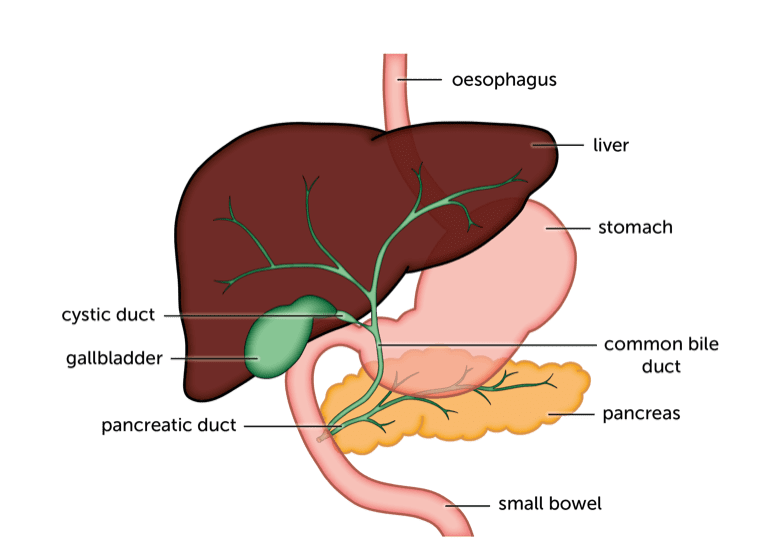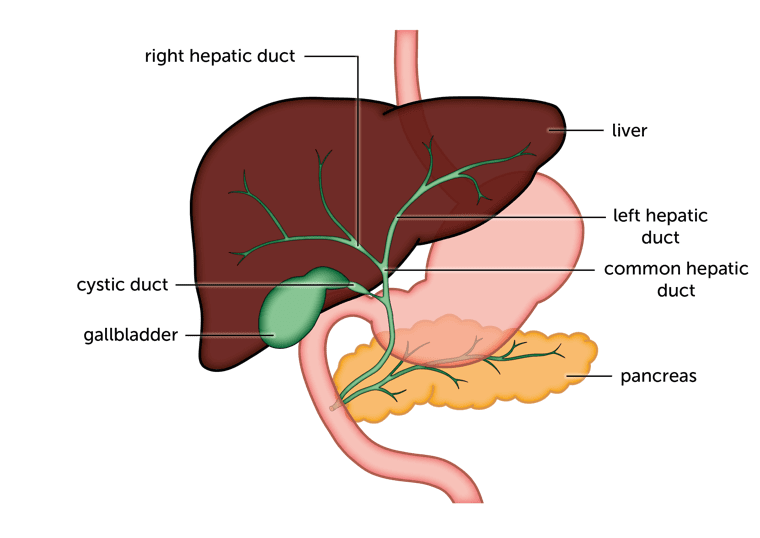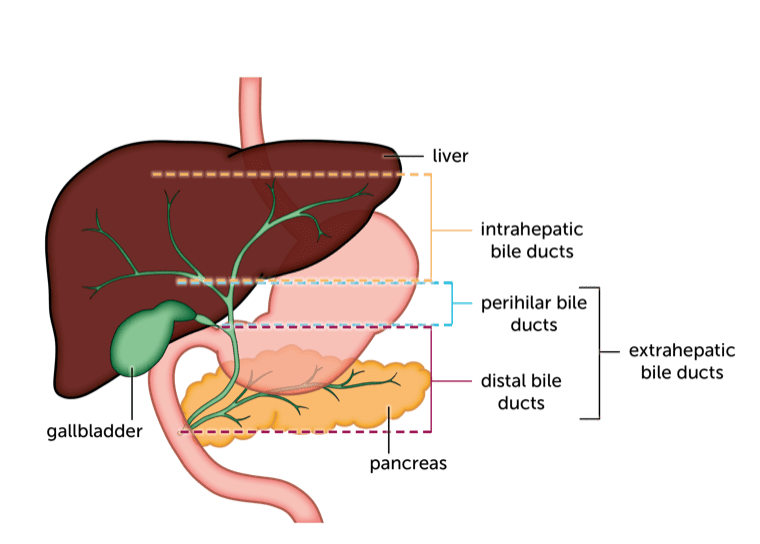Bile duct cancer is also called cholangiocarcinoma (say: kol-an-gee-oh-car-sin-oh-mah).
Cancer means that some abnormal cells have started to multiply more than they should. The extra cells form a lump (tumour). There are as many different types of cancer as there are types of cells in the body. In bile duct cancer, the cancer starts in cells lining the bile ducts.
What are bile ducts?
The bile ducts are small tubes that are mostly within the liver. They carry bile from cells in the liver to the gallbladder, where it is stored until your body needs it.

Other bile ducts carry bile from the gallbladder to the small bowel. When you eat a meal containing fat, the gallbladder contracts and bile is squeezed out into your bowel.
Bile is a yellowish-green liquid that aids digestion by helping to break down fat that you’ve eaten. It also helps the body get rid of a substance called bilirubin. This is a waste product from recycling old blood cells. It is what gives the bile its colour.

Beryl
“My message to anyone who reads this is to listen to your body and if something doesn’t feel right, insist on getting it checked out. “
The bile ducts in detail
The small bile ducts throughout the liver join up to form the right and left hepatic ducts. Just outside the liver, these join to form the common hepatic duct.

Another bile duct, called the cystic duct, carries bile from the gallbladder.
The common hepatic duct joins with the cystic duct to form the common bile duct. This empties bile into the small bowel.
Types of bile duct cancer
There are different types of bile duct cancer, depending on where the cancer started. This can be:
- In the ducts within the liver – intrahepatic bile duct cancer
- In the ducts outside the liver – extrahepatic bile duct cancer

There are 2 types of extrahepatic bile duct cancer, depending on exactly where the cancer is growing:
- Cancers that started where the right and left hepatic ducts meet are called perihilar or hilar bile duct cancers.
- Those that are further from that point are called distal bile duct cancers.
Content last reviewed: October 2022
Next review date: October 2025
